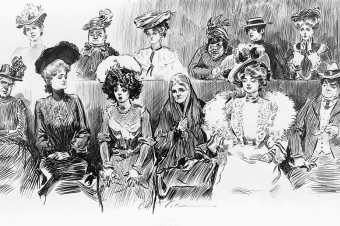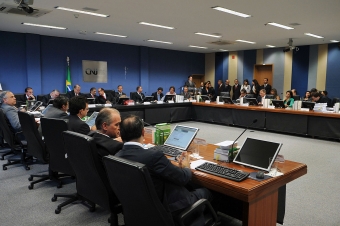Summary:
It is an activity that focuses on the process of tax execution, specifically the theme of prescription in judicial execution. It is intended that the students develop the ability to prepare legal arguments in a short period of time, requiring search for information on the process and out of it, coupled with the power to identify and articulate these concepts. Additionally, the students are invited to simulate its performance in the process, dealing with everyday difficulties in the search of legal arguments and procedural and procedural defects.
Objective:
- GENERAL GOAL: prescription and judicial enforcement are the basic themes in Tax Law class and essential to the daily repertoire. For this, the student should have direct contact with these issues and be able to solve complex questions that arise in practice.
- SPECIFIC GOAL: in a simulated environment, students are asked to perform in tax execution and deal with everyday difficulties looking for judicial arguments and process flaws and procedural defects.
- It is intended that students develop their skills in a short period of time, after work with case jurisprudence (previously studied), as well as expand their legal reasoning applied to concrete cases from the perspective of legal strategy.
Dynamics:
- TEACHING METHOD: game, in which students interact with each other in order to develop and compete for the best legal solution of the concrete case.
- REQUIREMENTS: for students, it was required some readings, such as: (i) judgments that deal about prescription, decay, tax execution, electronic attachment, etc. and (ii) theoretical text. For the professor, it was necessary to think very carefully about this case, with their dates, and determine the documents that would be delivered to the students.
- INTRODUCTION TO THE DYNAMICS: there was an introduction about active debt certificate (ADC) and the prescription deadline, enrollment in active debt and tax execution procedure. The professor presented the articles of the National Tax Code related and made notes on the blackboard, it took about 10 minutes.
- DEVELOPMENT OF THE DYNAMICS: in the first part, which also lasted 10 minutes, the professor gave students a fictitious ADC, prepared by herself, in which there could be some flaws that would give it the nullity. She explained the dynamics, divided the room into groups of four components and gave each of them several documents of the fictional process with specific deadline frames for the development of the dynamics. The professor explained that two partners were making competition between law firms, and groups assume the role of these offices.
Along 1 hour and 30 minutes, the students prepared a legal solution considering the context that could be different for each partner. They were able to consult any material, including the Internet. The records did not provide all the information, so each group could make four confidential factual questions (unanswered for other groups) to the professor, who was acting as representative of the partners. In the end, the students delivered a document with a legal solution to the case before the class interval - that occurred after 1 hour and 40 minutes. During the break, the professor read the delivered solutions. The group that showed the most appropriate solutions was the winner, getting an extra point in addition to those assigned to all for their participation.
- END OF THE DYNAMICS: at the beginning of the class, the professor made a time line of the case, presented and discussed concepts and elements inherent to it, exposing the exercise response together with the students. This closure lasted approximately 1 hour and 40 minutes. A participative exhibition was held and the professor had the opportunity to make general comments about the documents that was produced by the students. Finally, she exposed the solution that she considered the best one, justifying her choice.
- ATTENTION IN THE CLASSROOM:
1) The student should carry a consolidation of tax laws or vade mecum;
2) It is recommended a special care with the case and documents, and for that, a good knowledge of the STJ's jurisprudence, which allows further discussion of aspects of the case;
3) It is recommended that the professor clarifies on the exposure part the points of greatest doubts;
4) The students had access to the internet to do research, which made a richer class. If the professor does not have this possibility, he or she can give the student one more document (suggestion: a document entitled "Research done by an intern") with some menus or other results.
Evaluation:
- FEEDBACK: the professor commented the solutions of the groups during the closure.
- GRADE EVALUATION: the group that presented the best solution won one (1) extra participation point. The best offer was the one that came closer to the ideal solution. Also, there was an individual evaluation of student participation in class.
Observation:
It is possible to make the same dynamics to launch and decay, from an administrative process.







